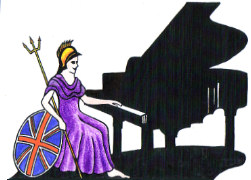Teachers, Accompanists and Piano Entertainers in the UK

UK Piano Page

High Street Llanerchymedd
Llanfairpwllgwyngyll, Anglesey LL65 3LS
Wales/Cymru
We are a retail Musical Instrument Company in
Verve House
Sunningdale
Ascot, Berkshire SL5 0DJ
England
Handel Pianos is a family run business and our
30 Pepper Street
Chester, Cheshire CH1 1DF
England
We supply all styles of Acoustic Piano, from
Unit 2, Crown Centre
Bond Street
Macclesfield, Cheshire SK11 6QS
England
Offers a hand-picked selection of prestigious
5 High Bank Side
Off St. Petersgate
Stockport, Cheshire SK1 1HG
England
we supply all styles of Acoustic Piano, from
Music Festival for performers and guests Our 10th
18-06-2022 01:30PM
The Morecambe Bay Piano Group was set up to extend
11-12-2021 02:00PM
The Morecambe Bay Piano Group was set up to extend
08-01-2022 02:00PM
The Morecambe Bay Piano Group was set up to extend
12-02-2022 02:00PM
Jazz Musivc in the UK Jazz in the UK is a form of music derived from jazz in the deep south of the USA. It arrived in the UK on records and Jazz performers who visited the country while it was a relatively new genre, soon after the end of World War I. Jazz began to be played by British musicians from the 1930s many in the south of England and became popular in the rest of the UK by 1940s, often within dance bands.
Ronnie Scott's Jazz Club opened in London, in 1959. Zoot Sims Jazz saxophonist was the club's first American visitor in 1962 Many famous Jaz artists have played there, including: Earl "Fatha" Hines, Chet Baker, Ella Fitzgerald, Anita O'Day, Nina Simone, Curtis Mayfield, Blossom Dearie, Dianne Reeves, Stacey Kent, Katie Melua, Jamie Cullum, Bobby Broom, Wynton Marsalis, Madeleine Peyroux, Prince, Chick Corea, Pat Metheny, George Benson and Cassandra Wilson. Also, in 1970 Jimi Hendrix's last public performance was at Ronnie Scott's.